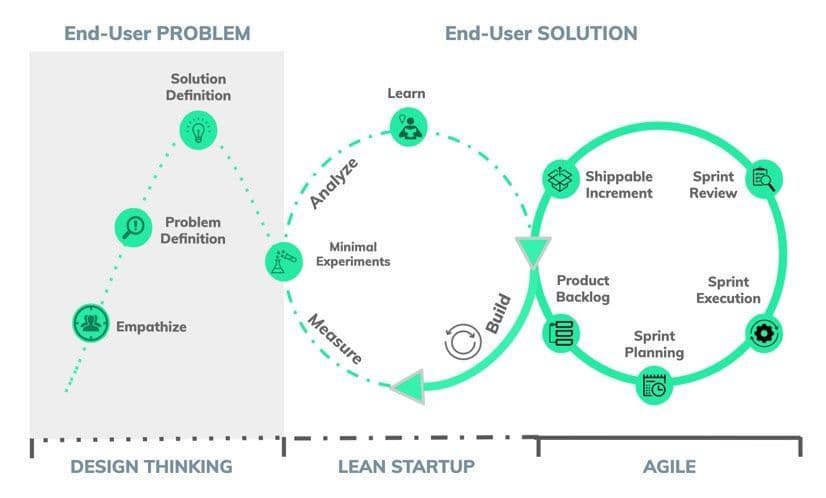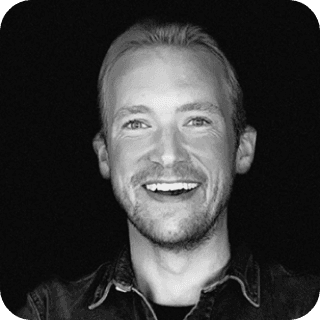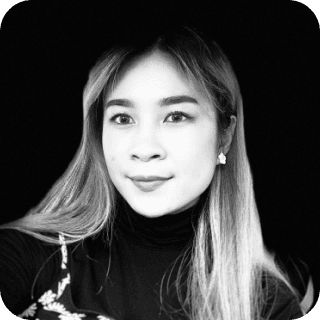app development
app idea
+ 4 more ...
Digital Conceptualisation in web/app development
16 Apr 2020
by Lotte, Digital Content Specialist
16 Apr 2020
by Lotte, Digital Content Specialist
app development
app idea
digital conceptualization
innovation
market research
target audience
Digital Conceptualisation in web/app development
Table of contents
Contact us
We will get back to you in the next 48 hours.

In order to turn your innovative ideas into the development of a successful application, a digital conceptualisation of these ideas is essential.
The world is full of great innovative ideas that grew out to be extremely successful multi-million dollar applications and businesses. Think of Uber, Snapchat, Instagram, and many more. They all began as a random spark of inspiration, a shower thought, a dream during your daily power nap. And they turned out to be innovative enough to change the world. However, success doesn’t just fall into your lap like that. We often tend to overlook the hard work and thought processes that take place during the journey from innovative idea to successful product. In order to turn your idea into profit, you’ll need to go through the essential process of so-called Digital Conceptualisation to get your tangle of ideas converted into concrete solutions.
What is Digital Conceptualisation
Digital conceptualisation revolves around the entire process of defining the end-user’s problem by means of empathy and mutual understanding within the concept of design thinking, to defining the end-user’s solution by means of Agile methodologies. Whereas the word “concept” defines itself as “idea”, the verb “conceptualizing” means turning a concept (or idea) into something you can grasp. The digital conceptualisation phase of a project involves the drafting of the scope of that project, and the documentation of all the desired features and requirements. Creating a tangible digital concept of a project is essential for a smooth and successful product development, as it forms the fundamental basis of the project. All decisions made afterwards are being built upon this basis. So you can imagine that, when that basis isn’t steadily conceptualised in the first place, you risk the entire project to become unstable and collapse. The digital conceptualisation of a couple of scattered ideas and visions is a process not to be underestimated. Not only do you require an extensive amount of knowledge on how to target an audience, and how the market of digital products functions. You also need to be able to have a crystal clear and distanced oversight of your ideas and plans in order to concretely define and order them. Like Lizard Global, most full stack digital agencies provide their clients with a complete package of services for turning an idea into an application. Digital conceptualisation is an indispensable part of that package, and these agencies are professionals when it comes to conceptualizing your problems and creating tailored solutions. They are skilled and experienced in the field of market research and targeting audiences, and know exactly how to turn dreams into reality, in the form of a successful application.
From idea to tangible concept
The process of digital conceptualisation at Lizard Global consists of a few essential elements, and every single one of them contributes to the formation of a foolproof product development. And because our methodology is based on working 100% agile, the following elements aren’t bound to a specific step-by-step order. The practice of agile digital conceptualisation is iterative; therefore, the individual elements intertwine throughout the entire process, from problem definition to developing a fitting solution.
Identifying and profiling the target audience
Defining a target audience is the first step towards creating a clear concept of an idea for an application. A specific target audience forms the basis of all future decisions made in the process of digital conceptualisation. For example, elements like UI and UX design and written content depend heavily on the target audience. Writing for senior citizens requires a much more formal language than writing for millennials, or children. Once we know who we are creating an app for, we can already somewhat predict the ways they’re likely to interact with your app. Defining and profiling a target audience consists of four core elements:
Segmentation in Target Group Characteristics Segmentation focuses on the subdivision of an audience into demographic segments, like age, gender, income level, education level, occupation, geographical location, and the industry they work in or they’re interested in.
Messaging Messaging consists of gathering the opinions of a target audience or end-users about your own brand. Based on their opinions, an app developer creates a more clear image of what elements they need to focus on, and what they could implement to improve the overall opinions on their product, service or brand.
Engagement Engagement involves research on how a target audience interacts with different communication channels and comparable apps. Based on that behaviour, we can form a predictive model of how they might interact with the app we are developing.
Measurement Measurement is a recurring element, which continuously tests the impact of your product on your target audience. Just like the entire process of digital conceptualisation, profiling a target audience is also an agile process with an iterative and repetitive nature. Only when testing different strategies and implementations in your app, you can find out if a product fits the target audience.

End-user problem definition
The idea is simple: in order to come up with a solution, you have to understand the problem. The actual act of really understanding a problem is, however, more complicated than you might expect. At Lizard Global, our process of defining the end-user’s problem is built around the concept of design thinking. This means that we closely listen to our end-users, and empathize with what they tell us. Only then we can fully understand their problems and obstacles, and define a solution that is perfectly aligned with their needs. Design thinking involves a great sense of empathy with the end-user. By empathizing and listening closely to our clients and their end-users, we can create a better understanding of the problems they face and how to define and develop a tailored solution. The practice of design thinking runs through the entire process of product development, of which digital conceptualisation forms a significant part.
End-user solution definition
Once we have a viable insight into the problems of our end-users, we can start building a tailored solution. This process still revolves around the practices of design thinking, and happens in close collaboration with our users. To make sure the eventual conceptualised solution perfectly fits the defined problems, we are fully dependent on understanding exactly how our end-user thinks.
Describing the main components of the solution
Once the problem and solutions are defined, we can start thinking of describing a minimal viable product (MVP). An MVP consists of just enough features needed to satisfy early end-users, and enable them to provide feedback needed for later stages of development. By prioritizing a limited but crucial set of features, you save time and effort on your way towards the development of the end-product. An MVP is a typical element of agile product development, as it is built on the idea of minimal effort with maximum feedback from its end-users.
Creating a high-level flow of the digital solution
Before we dive into the process of UI/UX design, wireframing, prototyping, testing, and eventually development, we develop a concrete plan of how exactly this process will be put into action. This involves creating a list of deliverables that visualise how we plan to develop a solution for our end-users.
- A technical road map that visualises the outlines of when, why, and what technologic solutions are needed to develop the product
- A detailed user-flow that shows the step-by-step path of actions taken by the end-user of the product
- 5 UI screens showing the look and feel of the product
- An overview of all technical implications and bottlenecks to prevent the risk of the unexpected occurrence of issues during the development process
- A cost indication to determine the approximate budget for the development of the product
Conceptualise your solution
Digital conceptualisation in app development revolves around the creation of a tangible, viable, and functional concept of an app. From targeting your audience to defining and formulating a solution, all processes are done with the aim to be a 100% agile. At Lizard Global, we formulate our digital solution with a clearly defined structure of so-called “themes”, “epics” and “user stories”. These three concepts are all based on agile methodologies, and are often part of scrum sprints.

The agile solution structure consists of a process from conceptualising a broad solution by the means of themes, and growing more detailed with epics and user stories. The process begins with a subdivision of the solution into so-called “themes”. Themes can be described as the static foundation of your product. The theme directly comes forth from the solution, and can be seen as the subgoal of a solution. A theme covers multiple epics, that, in their turn, cover multiple user stories. Epics are user objectives that need to be accomplished in order to achieve a theme. User stories are short descriptions of what end-users envision their ideal app to be like, and what features it possesses. To make things even clearer, we can split user stories up into tasks, which explain the exact steps that have to be taken to achieve the end-user’s wishes described in the user story. Together with the user stories, tasks form the building blocks of the solution. An example of a solution structure can look like this:
- Theme: “Increase web traffic”
- Epic: “Improve navigability of the website”
- User story: “As a user, I’d like to easily navigate the website, with a clear overview of all the pages and features”
- Task: “Make a dropdown menu to highlight the hierarchy of pages on the website”
Possessing a structure like this gives insight into the end-user problems, their needs and wishes, possible solutions, and specific actions to take in order to achieve these solutions. By iteratively going through this structure, we can constantly check if our strategies and solutions still fit our end-users’ needs. Curious about how we can help you with the digital conceptualisation of your ideas? Feel free to contact us on our social media channels and on our website. Together we can turn your idea into a concrete plan of action towards the development of your app.

In order to turn your innovative ideas into the development of a successful application, a digital conceptualisation of these ideas is essential.
The world is full of great innovative ideas that grew out to be extremely successful multi-million dollar applications and businesses. Think of Uber, Snapchat, Instagram, and many more. They all began as a random spark of inspiration, a shower thought, a dream during your daily power nap. And they turned out to be innovative enough to change the world. However, success doesn’t just fall into your lap like that. We often tend to overlook the hard work and thought processes that take place during the journey from innovative idea to successful product. In order to turn your idea into profit, you’ll need to go through the essential process of so-called Digital Conceptualisation to get your tangle of ideas converted into concrete solutions.
What is Digital Conceptualisation
Digital conceptualisation revolves around the entire process of defining the end-user’s problem by means of empathy and mutual understanding within the concept of design thinking, to defining the end-user’s solution by means of Agile methodologies. Whereas the word “concept” defines itself as “idea”, the verb “conceptualizing” means turning a concept (or idea) into something you can grasp. The digital conceptualisation phase of a project involves the drafting of the scope of that project, and the documentation of all the desired features and requirements. Creating a tangible digital concept of a project is essential for a smooth and successful product development, as it forms the fundamental basis of the project. All decisions made afterwards are being built upon this basis. So you can imagine that, when that basis isn’t steadily conceptualised in the first place, you risk the entire project to become unstable and collapse. The digital conceptualisation of a couple of scattered ideas and visions is a process not to be underestimated. Not only do you require an extensive amount of knowledge on how to target an audience, and how the market of digital products functions. You also need to be able to have a crystal clear and distanced oversight of your ideas and plans in order to concretely define and order them. Like Lizard Global, most full stack digital agencies provide their clients with a complete package of services for turning an idea into an application. Digital conceptualisation is an indispensable part of that package, and these agencies are professionals when it comes to conceptualizing your problems and creating tailored solutions. They are skilled and experienced in the field of market research and targeting audiences, and know exactly how to turn dreams into reality, in the form of a successful application.
From idea to tangible concept
The process of digital conceptualisation at Lizard Global consists of a few essential elements, and every single one of them contributes to the formation of a foolproof product development. And because our methodology is based on working 100% agile, the following elements aren’t bound to a specific step-by-step order. The practice of agile digital conceptualisation is iterative; therefore, the individual elements intertwine throughout the entire process, from problem definition to developing a fitting solution.
Identifying and profiling the target audience
Defining a target audience is the first step towards creating a clear concept of an idea for an application. A specific target audience forms the basis of all future decisions made in the process of digital conceptualisation. For example, elements like UI and UX design and written content depend heavily on the target audience. Writing for senior citizens requires a much more formal language than writing for millennials, or children. Once we know who we are creating an app for, we can already somewhat predict the ways they’re likely to interact with your app. Defining and profiling a target audience consists of four core elements:
Segmentation in Target Group Characteristics Segmentation focuses on the subdivision of an audience into demographic segments, like age, gender, income level, education level, occupation, geographical location, and the industry they work in or they’re interested in.
Messaging Messaging consists of gathering the opinions of a target audience or end-users about your own brand. Based on their opinions, an app developer creates a more clear image of what elements they need to focus on, and what they could implement to improve the overall opinions on their product, service or brand.
Engagement Engagement involves research on how a target audience interacts with different communication channels and comparable apps. Based on that behaviour, we can form a predictive model of how they might interact with the app we are developing.
Measurement Measurement is a recurring element, which continuously tests the impact of your product on your target audience. Just like the entire process of digital conceptualisation, profiling a target audience is also an agile process with an iterative and repetitive nature. Only when testing different strategies and implementations in your app, you can find out if a product fits the target audience.

End-user problem definition
The idea is simple: in order to come up with a solution, you have to understand the problem. The actual act of really understanding a problem is, however, more complicated than you might expect. At Lizard Global, our process of defining the end-user’s problem is built around the concept of design thinking. This means that we closely listen to our end-users, and empathize with what they tell us. Only then we can fully understand their problems and obstacles, and define a solution that is perfectly aligned with their needs. Design thinking involves a great sense of empathy with the end-user. By empathizing and listening closely to our clients and their end-users, we can create a better understanding of the problems they face and how to define and develop a tailored solution. The practice of design thinking runs through the entire process of product development, of which digital conceptualisation forms a significant part.
End-user solution definition
Once we have a viable insight into the problems of our end-users, we can start building a tailored solution. This process still revolves around the practices of design thinking, and happens in close collaboration with our users. To make sure the eventual conceptualised solution perfectly fits the defined problems, we are fully dependent on understanding exactly how our end-user thinks.
Describing the main components of the solution
Once the problem and solutions are defined, we can start thinking of describing a minimal viable product (MVP). An MVP consists of just enough features needed to satisfy early end-users, and enable them to provide feedback needed for later stages of development. By prioritizing a limited but crucial set of features, you save time and effort on your way towards the development of the end-product. An MVP is a typical element of agile product development, as it is built on the idea of minimal effort with maximum feedback from its end-users.
Creating a high-level flow of the digital solution
Before we dive into the process of UI/UX design, wireframing, prototyping, testing, and eventually development, we develop a concrete plan of how exactly this process will be put into action. This involves creating a list of deliverables that visualise how we plan to develop a solution for our end-users.
- A technical road map that visualises the outlines of when, why, and what technologic solutions are needed to develop the product
- A detailed user-flow that shows the step-by-step path of actions taken by the end-user of the product
- 5 UI screens showing the look and feel of the product
- An overview of all technical implications and bottlenecks to prevent the risk of the unexpected occurrence of issues during the development process
- A cost indication to determine the approximate budget for the development of the product
Conceptualise your solution
Digital conceptualisation in app development revolves around the creation of a tangible, viable, and functional concept of an app. From targeting your audience to defining and formulating a solution, all processes are done with the aim to be a 100% agile. At Lizard Global, we formulate our digital solution with a clearly defined structure of so-called “themes”, “epics” and “user stories”. These three concepts are all based on agile methodologies, and are often part of scrum sprints.

The agile solution structure consists of a process from conceptualising a broad solution by the means of themes, and growing more detailed with epics and user stories. The process begins with a subdivision of the solution into so-called “themes”. Themes can be described as the static foundation of your product. The theme directly comes forth from the solution, and can be seen as the subgoal of a solution. A theme covers multiple epics, that, in their turn, cover multiple user stories. Epics are user objectives that need to be accomplished in order to achieve a theme. User stories are short descriptions of what end-users envision their ideal app to be like, and what features it possesses. To make things even clearer, we can split user stories up into tasks, which explain the exact steps that have to be taken to achieve the end-user’s wishes described in the user story. Together with the user stories, tasks form the building blocks of the solution. An example of a solution structure can look like this:
- Theme: “Increase web traffic”
- Epic: “Improve navigability of the website”
- User story: “As a user, I’d like to easily navigate the website, with a clear overview of all the pages and features”
- Task: “Make a dropdown menu to highlight the hierarchy of pages on the website”
Possessing a structure like this gives insight into the end-user problems, their needs and wishes, possible solutions, and specific actions to take in order to achieve these solutions. By iteratively going through this structure, we can constantly check if our strategies and solutions still fit our end-users’ needs. Curious about how we can help you with the digital conceptualisation of your ideas? Feel free to contact us on our social media channels and on our website. Together we can turn your idea into a concrete plan of action towards the development of your app.







